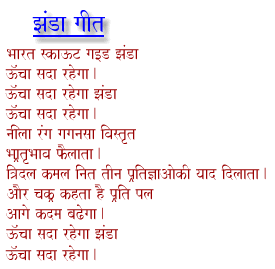HISTORY AND STORY OF GUIDING
History of Guiding
The Girl Guide Movement started in England in 1909. Robert Baden-Powell, a British Army General recently returned from the South African Wars, had written a series of articles on scouting based on his experiences there. These were published in an English boys’ magazine. Boys started practising scouting on their own and in 1908 the Boy Scouts were formed. By 1909 Scouting had become so popular that a rally was held at the Crystal Palace in London. Eleven thousand boys turned up. Great astonishment was caused by a group at the end of the long parade─girls! While their brothers had been busily occupied with Scouting, these girls had been copying them, usually in secret. Girls at that time were expected to be ladylike, doing needlework and art. Their place was definitely in the home, not outdoors dressed in outlandish costumes, practising stalking, tracking, first aid, stopping runaway horses and rescuing people from burning buildings! Both their mothers and the general public were shocked and horrified at the girls’ escapades and appearance─skirts hiked up, wearing Scout hats, carrying stout broomsticks, hung about with whistles, knives and enormous haversacks decorated with large red crosses.These daring girls pleaded with B-P to be allowed to join the Scouts. He agreed to help them but said that they would be Girl Guides and have Patrol names of flowers or birds, not wolves! He asked his sister, Agnes Baden-Powell, to help him with a girls’ organization and she became the first President of the Girl Guides. Working together, they produced Pamphlet A and Pamphlet B, outlining program ideas and badges for the girls. Later, an adaptation of B-P’s Scouting for Boys was published: The Handbook for Girl Guides or How Girls Can Help to Build Up the Empire. This remained the standard manual for many years. Visitors to Britain observed the value of Guiding for girls and took the idea back to their own countries. By 1910 Guiding had started in Canada, Denmark, Finland and South Africa. Within the next two years it spread to Ireland, Holland, Sweden and the United States.
In 1912, Baden-Powell married Olave St. Clair Soames and when he was later knighted for his service to his country, she became Lady Baden-Powell. She was our first and only World Chief Guide. Olave was a great help to B-P in his work for Scouting and Guiding. They visited Canada several times, the first visit being in 1914. B-P died in 1941. After the Second World War was over Lady Baden-Powell began traveling again, visiting her “family” all over the world. Her last visit to Canada was in 1970. She died in 1977 at the age of 88.
STORY OF GUDING
The Guides are a famous crops belonging to the frontier force. These men were trained for fighting under any conditions-on foot-on horseback in the mountains or on the plains. They had to be ready to turn out on active service at any time of the days or night. Even they had to be ready to sacrifice their lives.
Then there are Guides in Europe, the picked mountaineers of Switzerland. These men are known for their courage and skill in tackling obstacles. The easy path is of no interest of these Guides. They find the meaning of life in the face of difficulties, danger and self-sacrifice and only by surmounting these can they reach the summit, which they set out to attain.
Most girls like to live as these pioneers and guides are living. They would rather be ready to help others, to sacrifice themselves and find their happiness in overcoming difficulties and that is just what the Guide can do.
Pioneers go ahead to find the path for others to follow; their task requires knowledge, courage and sacrifice. A Guide may have all these things in common with the pioneers. Adventure and the satisfaction of service belong to the girls, as they belong to the tribe heroines of a by gone days - to SITA, to SAVITRI, to the other women of Ramayana and Mahabharata fame.
A guide leans to live in the open as the brave Rajput women used to live. For the Guide, friendliness and happiness will become a habit, as she trains herself to be able to do her duty to her country and in her home.
She explores new fields of knowledge, discovers new ways of enjoying herself and in finding these fresh pleasures she discovers the happiness and joy of giving her service freely to others.

Comments
Post a Comment